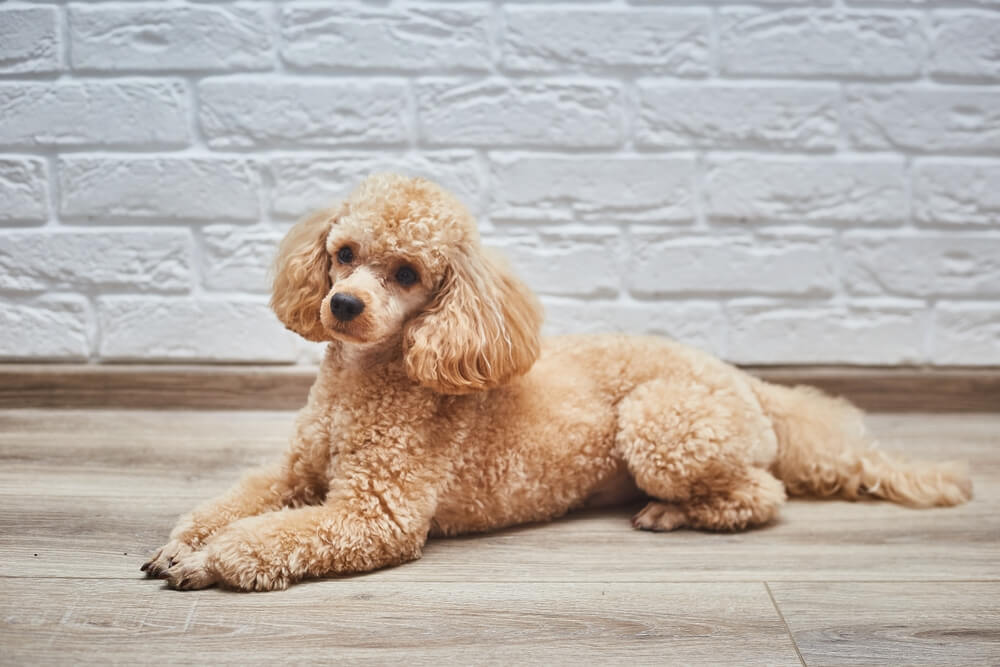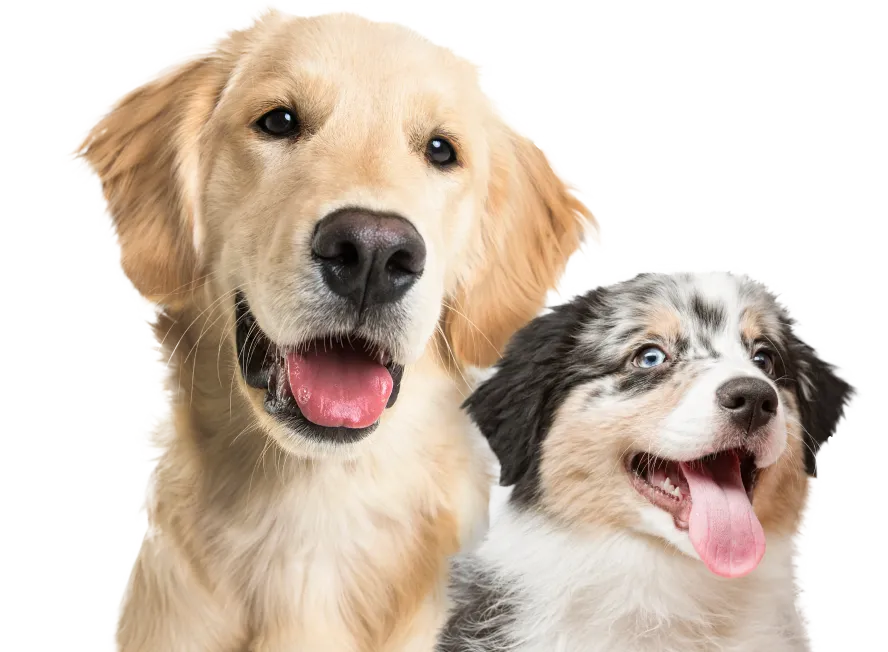Poodle Dog Breed: Size, Personality and More

DogFoodAdvisor is reader supported See how
All reviews are 100% impartial but if you buy using links on this page, we may earn a referral fee.
“Intelligent”; “flamboyant”; “elegant”: all words commonly used to describe Poodles, one of the most popular breeds of dog in the world, and a breed that’s become renowned for its elaborate and fancy clipped fur.
But the breed wasn’t always known for its finely crafted “pompons” on its rear quarters. The first Poodles were bred in Germany in the early 1800s specifically for hunting ducks, despite being known as the national dog of France today. The word Poodle is derived from the German “pudelin”, meaning splashing in water. They are expert swimmers, and became known for their skill at retrieving in water.
Over time, hunters trimmed their Poodles’ fur to help them swim more efficiently while leaving specific sections of sculpted fur to keep the dog’s hips and legs warm. This is where Poodles’ famed “pompons” began — evolving over time into the fanciful designs on the legs, hips and tail they’ve become known for today. The fact that generations of nobles and royalty adopted Poodles as a status symbol over time only helped to serve their reputation.
There are three main subdivisions within the Poodle breed: Standard, Miniature and Toy. The American Kennel Club defines Standard as bigger than 15 inches to the shoulder, Miniatures less than 15 inches to the shoulder, and Toys are no more than 10 inches.
As most dog parents might imagine, the Poodle’s thick, curly coat requires above-average maintenance. Daily grooming is required from the roots to avoid matting — as a result, many Poodle parents keep their dog’s hair trimmed short. As they do not shed, Poodles are favored by dog parents with allergies.
Poodles’ popularity as a pet remains timeless due to their energetic, playful, and inquisitive nature, their loyalty and adaptability, and their love of being around humans. Due to their high intelligence they’re easy to train, and are good around children so make perfect family pets.
They require plenty of exercise — they love to spend time in water and retrieve balls or toys — plenty of mental stimulation, and daily grooming and coat maintenance.
The breed is currently ranked number five in the American Kennel Club’s list of most popular breeds in the U.S. after being formally recognized as a breed by the AKC in 1897.
General Characteristics:
- Origin: Germany.
- Size: Standard, Miniature, Toy.
- Height: Standard: over 15 inches. Miniature: 15 inches or under. Toy: Less than 10 inches
- Lifespan: 10-18 years
Appearance:
- Coat: Thick, long and curly hair that does not shed and requires regular grooming.
- Colors: Solid colours: black, white, apricot, cream, grey, red.
- Build: Muscular, thin, athletic, strong.
Temperament:
- Gentle: They make perfect family dogs, and get on well with other dogs.
- Energetic: Always ready for a game, Poodles require plenty of exercise and love to retrieve.
- Intelligent: Poodles are easy to train and remarkably clever.
Training and Exercising:
- Training: With their high intelligence and sharpness, Poodles are eager to learn and pick up commands quickly.
- Exercise: With high energy levels, Poodles require plenty of daily walks and games.
Grooming:
- Shedding: Poodles barely shed, making them a good choice for people with allergies.
Interesting Facts About Poodles:
- Poodles became well-known for being circus dogs due to their agility skills and elaborate grooming designs.
- To compete, Poodles must have one of three intricate cuts: the Continental Clip, the Modified Continental Clip or the English Saddle.
- Poodles have been used as sled dogs in a famous Alaskan race, the Iditarod. A man named John Suter used Standard Poodles in the race in 1988, after noticing his dog running with him on the sled, and that if he fell off his dog would come to him rather than keep running. However, during the race, his Poodles suffered in the cold and had to be dropped off at checkpoints.
Poodle Price:
The average cost of a Poodle in the U.S. varies depending on the dog’s pedigree, the breeder’s reputation, location, and whether the dog is intended for show, breeding, or as a pet. Here’s a general guide:
Show Quality or Breeding Quality Poodle:
Price Range: $2,500-$5,500
If buying a Poodle puppy or specific breeds of Poodle, the price will be towards the more expensive end of the spectrum.
Rescue or Adoption:
Adoption Fee: Around $500
A Poodle adopted from a rescue organization or shelter generally costs less. This fee often includes initial veterinary care and spaying/neutering.
The Best Food for Poodles:
Redbarn Air-Dried Chicken Recipe
This food is packed with high-quality, air-dried chicken for a protein-rich diet that supports Poodles’ muscle tone and energy needs. Its nutrient-dense formula, with added vitamins, minerals, and omega fatty acids, promotes a healthy coat, skin, and overall vitality.
For more choices: See our Best Food for Poodles page.
Final word
The Dog Food Advisor does not accept money, gifts, samples or other incentives in exchange for special consideration in preparing our reviews.
However, we do receive a referral fee from online retailers (like Chewy or Amazon) and from sellers of perishable pet food when readers click over to their websites from ours. This helps cover the cost of operation of our free blog. Thanks for your support.
For more information, please visit our Disclaimer and Disclosure page.



